What you can do to best organize your kitchen cabinets
It’s like a scene out of a comedy – a character visits a slob at his residence, opens a cabinet and is pummeled by an outpouring of junk. Laughter ensues.
It’s just as good for a laugh in the real world, too, but nobody wants that kind of attention. It’s the classic case of knowing when the laughter is at or with. Avoid the humiliation.
Say you have a date over and she opens a messy cabinet where an assortment of monster car models is what’s immediately visible. She’ll think she’s having a date with a child. Whether they know it or not, women feel safer with a man who portrays a sense of domesticity.
 So, before something like that happens, let’s sort some things out – most notably, your cabinets. Start by asking yourself, “What items do I use every day?” What gets shoved to the back?” Get rid of the items you can do without, and consider how to make your cabinets functional, organized, clean, and even attractive.
So, before something like that happens, let’s sort some things out – most notably, your cabinets. Start by asking yourself, “What items do I use every day?” What gets shoved to the back?” Get rid of the items you can do without, and consider how to make your cabinets functional, organized, clean, and even attractive.
Start by taking everything out of your cabinets. Just like any other project, it’s best to begin with a clean slate.
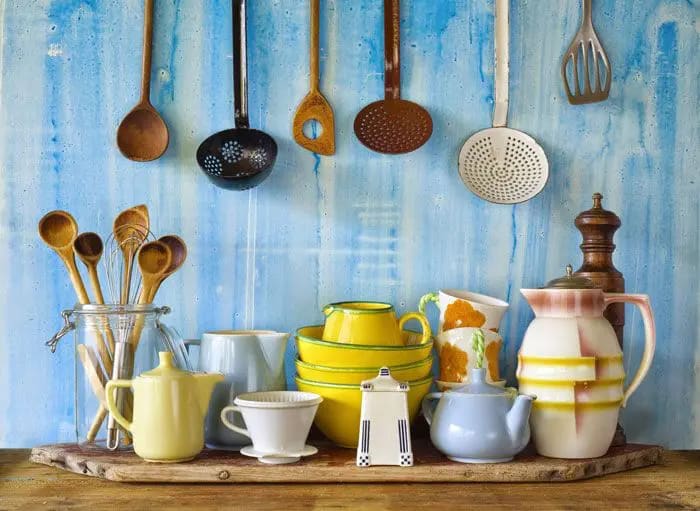 Place all of your plates, glasses, mugs, pots, pans and all other kitchenware on the kitchen table. Now, let’s look at each item – what do you need and what can be tossed? Who knows what you’ve pulled out of there – a decade’s old box of straws, random paper plates, and about two dozen shopping bags? Despite whatever amusing things you find, it’s time to drain the swamp. Let’s narrow this collection down to what you will actually use. Anything else, presumably, is unnecessary clutter. If there are items that aren’t crap in decent condition that you simply have no use for, consider dropping them off at your local Salvation Army.
Place all of your plates, glasses, mugs, pots, pans and all other kitchenware on the kitchen table. Now, let’s look at each item – what do you need and what can be tossed? Who knows what you’ve pulled out of there – a decade’s old box of straws, random paper plates, and about two dozen shopping bags? Despite whatever amusing things you find, it’s time to drain the swamp. Let’s narrow this collection down to what you will actually use. Anything else, presumably, is unnecessary clutter. If there are items that aren’t crap in decent condition that you simply have no use for, consider dropping them off at your local Salvation Army.

{Picture reference to Home Depot}
The next step is all about cleaning. It’s not often you get your cabinets completely empty, let’s take advantage and clean ‘em thoroughly. Get your supplies and go to town. Clean out all the crumbs, dust, any weird residue and wipe the cabinet doors down. These efforts will later help keep bugs out while keeping your stuff fresh and protected.
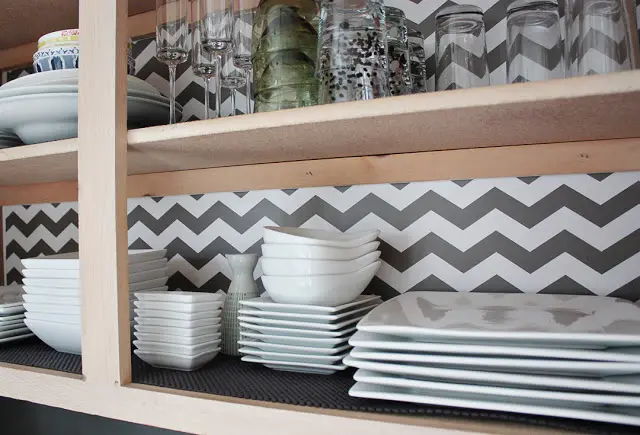
Next up, you will need cabinet linings. These are easy and you can make them yourself. Ideally, they will eliminate old odors and create a fresh and inviting space. You can choose paper, rubber or vinyl liners that are available in a wild assortment of designs (some even have an adhesive baking). Simply measure your cabinet floors then cut them to size.
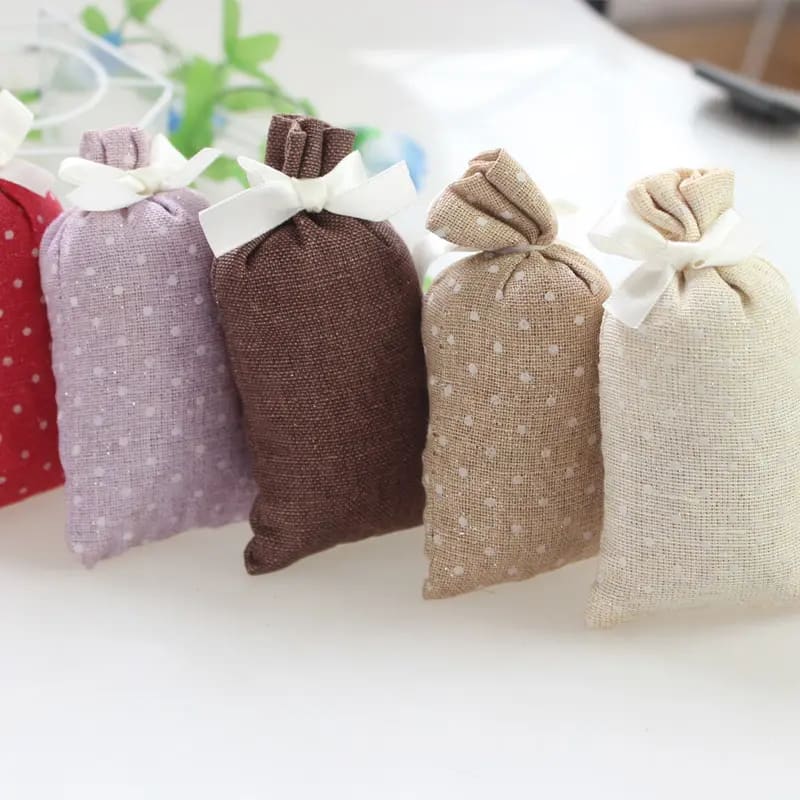 Ah, sachets. The sachets will help maintain a nice fresh smell within the cabinets. Customize them – pick out a few dried herbs and spices and place them in small bags that are drawn shut. There are even certain herbs that deter insects, such as eucalyptus, tea tree oil or lemon oil. In order to absorb an assortment of bad odors, fill the sachets with baking soda. Whichever route you pursue, you will then need to put the sachets in the corners of your cabinets.
Ah, sachets. The sachets will help maintain a nice fresh smell within the cabinets. Customize them – pick out a few dried herbs and spices and place them in small bags that are drawn shut. There are even certain herbs that deter insects, such as eucalyptus, tea tree oil or lemon oil. In order to absorb an assortment of bad odors, fill the sachets with baking soda. Whichever route you pursue, you will then need to put the sachets in the corners of your cabinets.
At last we can think about returning the items to their cabinets, but let’s do it wisely. While it’s not necessary to purchase organizers, they can’t hurt. Part of the reason for the overhaul is to help reduce clutter so, why not implement a utensil organizer? They’re only a couple of bucks and it beats having loose forks and knives lying around. For a nice touch that takes advantage of unused space, install tea- or coffee cup hooks. You may have them mounted to the underside of the cabinets so they hang just over the countertop, easily accessible. It’s particularly decorative if you have an attractive set of cups to display.
Put your dry goods in canisters. Use tightly sealed food containers (to keep insects and air out) to store flour, sugar, spices and other food items in the cabinets.
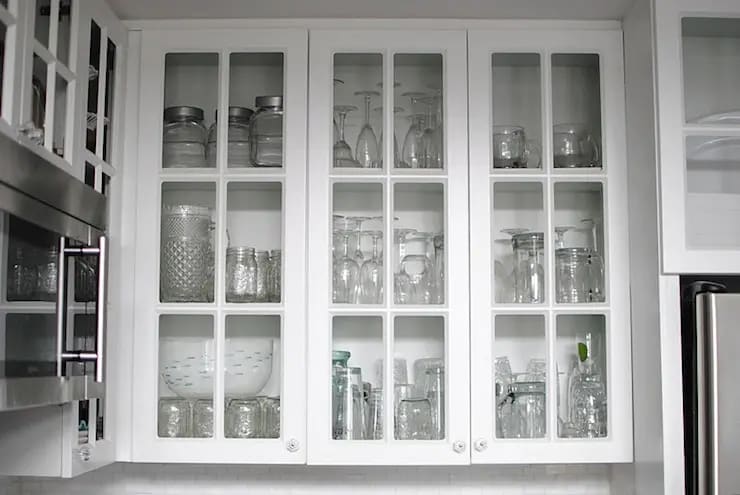
Now that you’ve already deleted a few things, thereby reducing the volume of cabinet contents, organize the remaining items by type. Put all glassware together, separate the stemware (wine and champagne glasses) in their own group and combine plates and bowls (stacking salad plates over dinner ones), and collect the fine china and seasonal pieces.
If you are working with glass-front cabinets, you’ll want to organize the items to feature the ones you want visible. Of course dishes that get the most use should be the easiest to access. This would likely include dinner and salad plates and cereal bowls. For the average-height person, the bottom of a top cabinet (above the counter) is typically best suited. Meanwhile, gather all drink ware in the form of glasses, coffee cups, and mugs.
The higher shelves are ideal for your valuable and fragile items. They’ll be safer and should be arranged so they may be most handled with care. Handled carefully, your fine china, stemware, special serving dishes, etc… should actually be placed out of easy reach.

{Picture Reference to Houzz}
Since they are somewhat cumbersome and don’t stack neatly, placing pots and pans in the lower cabinets is best. Put the ones you use most within easiest reach where you won’t have to lift them too high. Of course, you may consider the alternative of hanging the cookware upon a pot rack adjacent to the cabinets. This method of storage facilitates easier organization. Another option, albeit used rarely, is to place the pots and pans on top of the cabinets, assuming there’s room.
Study the area and determine the best place for your appliances. The ones you use most often should be right there visible on the counter. Others that don’t get as much use may simply go in a cabinet elsewhere.
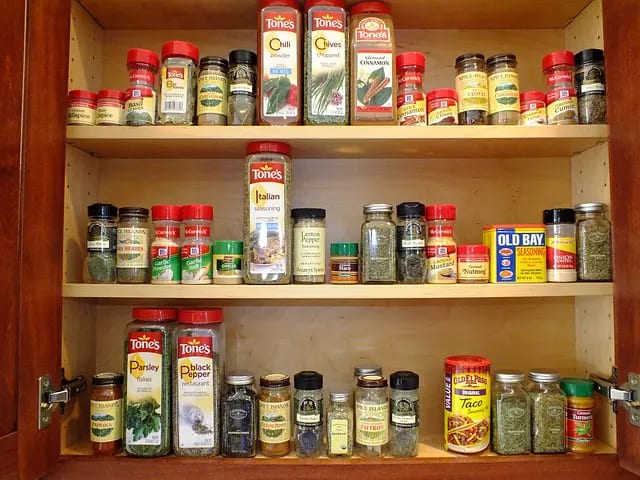
And there’s the matter of food. You’ll probably want a food and spice cabinet. It’s best located somewhere a bit separated by the rest of the kitchen apart from the dishes. A special cabinet just for your extracts herbs and spices can be nice, placed within easy reach of your cooking area. A spice drawer may also suffice but be sure to line it with disposable liners that you may replace when it is a bit too littered.

We’ve begun the Law of Designation. There’s likely a row of drawers meant to hold the supplies that don’t belong in cabinets. Decide what sense of placement works best for you. You’ll likely want to keep small tools like can openers and peelers together. For the constant baker, a drawer containing measuring cups and spoons and other baking supplies is ideal. Towels and oven mitts take up enough space to justify a drawer of their own, and another for accessories like aluminum foil or plastic wrap is warranted. Of course you’ll want to save one as the “junk drawer” that will house loose pens, rubber bands, coupons, and a host of other random stuff that you would know to find there.
It probably goes without saying; cleaning supplies go under the sink. All of it – detergent, trash bags, sponges, etc… typically belong there. No food, no kitchenware, they have their own designated spaces designed to best accommodate them.
An organized kitchen makes everyday living just a little easier. Whether you’re baking a cake or taking out the trash, having everything you need easily accessible in the right cabinets or drawers is a benefit of organization that should be enjoyed by all modern homeowners.





